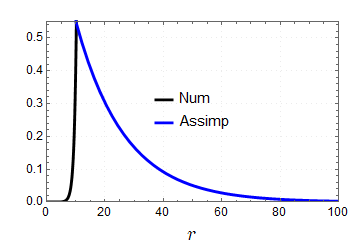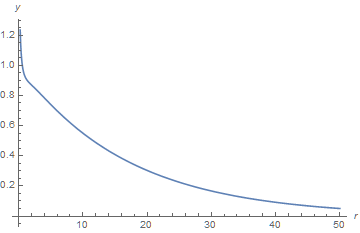I want to solve this 2nd order ODE with two initial conditions close to the origin (one to the function and the other to its derivative) and more two similar conditions for an endpoint.
c = 0.5;
rzer = 0.001;
rmax = 10.000;
vmax = 0.550718236126181`;
dmax = -0.032852103365844154`;
shc0 =
NDSolve[
{y''[r] + (1.` Csch[1.` r] - 1.25` Tanh[0.5` r]^2) y'[r] +
(-0.00048828125` Csch[0.5` r]^2 Sech[0.5` r]^4
(14.` + 139.` Cosh[1.` r] - 30.` Cosh[2.` r] + 5.` Cosh[3.` r] +
32.` Sinh[1.` r] - 16.` Sinh[2.` r])) y[r] == 0,
y[rzer] == rzer, y'[rzer] == rzer, y[rmax] == vmax, y'[rmax] == dmax},
y[r], {r, rzer, rmax}]
But Mathematica 10 returns the message:
NDSolve::nlnum1 The function value {-0.001,-0.001,-0.550718,0.0328521} is not a list of numbers with dimensions {2} when the arguments are {0.,0.,0.,0.,0.,0.}.
My code only returns solutions when two values are fixed. Is there no way to solve this with the default method?
The aim of this problem was find a solution with these initial conditions (y'(0)=y(0)=0) that connects smoothly (preserves the slope) with an exponentially decreasing solution asymptotically, so have a finite integration in the interval with value greater that precision rzer (0.001).
I suppose that is not possible obtain a solution that satisfies all conditions imposed.
Thanks again.





